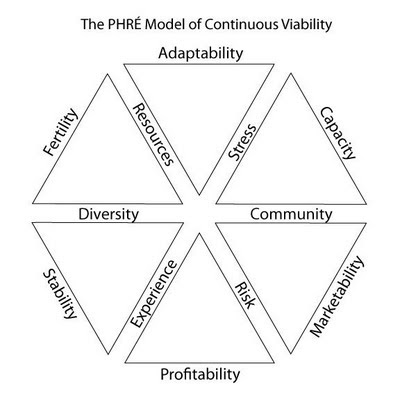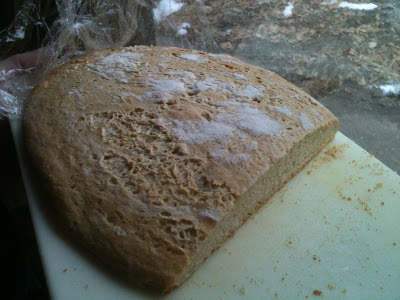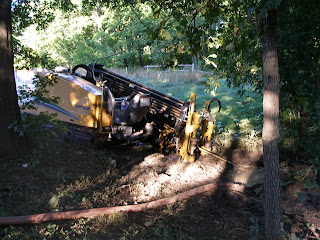A Definition of Sustainable Agriculture
A Definition of Sustainable Agriculture
Nothing exists outside a relationship because all things are in relationships. It is the relationships that define something as well as its own characteristics. Cut off from supporting resources everything is in decay. Systems break down and organisms die and mechanisms become obsolete. Ecologically integrated organisms are at balance with their surroundings and become part of the ecosystem. For each resource they consume, they supply another or cycle the resource via mechanisms of facilitation. Mechanisms of Facilitation describe species interactions that benefit at least one of the participants and cause harm to neither (Stachowicz 2001).
Equilibrium
Even with periodic disturbances nature seems to work towards a balance and equilibrium in all things. The resources are used at whatever state they exist and those organisms that can find a niche in the conditions establish a presence. An ecological niche is a site-specific location relative to weather, soil, sun, plants and animals that inhabit the space (Jacke, D & E.Toensmeier, 2007). It is a position within an ecosystem outside of which the organism will not thrive or survive. The first pioneer organisms in a niche begin to slowly change the environment to bring the area to higher levels of nutrients, nitrogen, and organic matter for other organisms. The pioneer's waste is a resource for more growth and the pioneer itself is food for another high organism, which then supports another as others establish a diverse ecology with early species being replace in succession. Whenever a new species enters a niche the resources are affected as the species attends to its needs. The niche may support another species or not. An ecosystem is continually building natural capital. A sustainable agriculture must also build natural capital. (Holmberg, J. and Robèrt, K-H. 2000).
In the case of agriculture, humans have the ability to modify the niche beyond the scope of animals. But in doing so continually fights the natural forces towards equilibrium that built the niche. A sustainable agriculture system must work with the natural resources to keep the balance of input and output and at the same time produce abundant yields. It is not a self-supporting system, but depends on indigenous external resources as well as internal. Depleting and disturbing the soil sets back the state of a niche where the pioneer plants (weeds) return to build the soils up once more. Returning by germinating from an existing seed bank in the undisturbed soil. Either way the land will tend toward a steady state of succession.
The purpose of agriculture is to supply human needs for food, fodder, fiber, and pharmaceuticals and in some cases fun (Jacke, D & E.Toensmeier, 2007). Whether the system of agriculture can sustain the outputs without excessive and diminishing inputs is the question in sustainability. Agriculture is a system like ecology; an integrative discipline that combines components and systemic functions that must produce a larger functional whole (Odum, P.2007). If agriculture outputs less than its whole input or depletes the very resources it depends on, its sustained existence is impossible. Its purpose is not being fulfilled since its purpose is to feed not only the present population, but also future generations and at the same time maintain its resources to produce the next crop. These integrated multi-functions and outcomes must be in real time and simultaneous, or the farmer (resource manager) will always be working to restore lost resources that are shipped off or washed off the fields (Holmgren, David 2002).
While human agriculture is broken up into repetitive tasks with singular goals. The natural world demands each element be multifunctional and contribute to the natural capital. The truly sustainable agricultural system must also be multifunctional, integrated, and self-renewing in the same way.
Addendum
The PHRE' Model of Sustainability

The PHRE’ model is a concept developed by Katherine Plowman and myself from the University of Minnesota and Ashley Reas and Shawn Edelan of Iowa State. We were asked to give a presentation in AGRO5999 on sustainability and chose to define it as a system of interdependent characteristics. Although it needs some refinement I found our model to help others in understanding the importance of integrating all aspects of a farm while assessing its sustainability or as we called it continuous viability. The draft model (below) shows the supporting interactions between resource based elements and relationship elements. This project instilled in me the importance of looking at the farm or any functioning entity as integrated systems not techniques. Considering the relationships between these components helps assess the viability of the farm.
Citations
Stachowicz, J. J. 2001. Mutualism, facilitation, and the structure of ecological communities. BioScience '51': 235-246.
Jacke, D & E.Toensmeier, 2007. Edible Forest Gardens, Volume 1 & 2,
Holmberg, J. and Robèrt, K-H. (2000). "Backcasting from non-overlapping sustainability principles – a framework for strategic planning." International Journal of Sustainable Development and World Ecology 7 291–308.
Eugene P. Odum, The Emergence of Ecology as a New Integrative Discipline Science, New Series, Vol. 195, No. 4284 (Mar. 25, 1977), pp. 1289-1293 Published by: American Association for the Advancement of Science
Holmgren, D. (2002). Permaculture: Principles & pathways beyond sustainability. Hepburn, Vic.: Holmgren Design Services.
Nothing exists outside a relationship because all things are in relationships. It is the relationships that define something as well as its own characteristics. Cut off from supporting resources everything is in decay. Systems break down and organisms die and mechanisms become obsolete. Ecologically integrated organisms are at balance with their surroundings and become part of the ecosystem. For each resource they consume, they supply another or cycle the resource via mechanisms of facilitation. Mechanisms of Facilitation describe species interactions that benefit at least one of the participants and cause harm to neither (Stachowicz 2001).
Equilibrium
Even with periodic disturbances nature seems to work towards a balance and equilibrium in all things. The resources are used at whatever state they exist and those organisms that can find a niche in the conditions establish a presence. An ecological niche is a site-specific location relative to weather, soil, sun, plants and animals that inhabit the space (Jacke, D & E.Toensmeier, 2007). It is a position within an ecosystem outside of which the organism will not thrive or survive. The first pioneer organisms in a niche begin to slowly change the environment to bring the area to higher levels of nutrients, nitrogen, and organic matter for other organisms. The pioneer's waste is a resource for more growth and the pioneer itself is food for another high organism, which then supports another as others establish a diverse ecology with early species being replace in succession. Whenever a new species enters a niche the resources are affected as the species attends to its needs. The niche may support another species or not. An ecosystem is continually building natural capital. A sustainable agriculture must also build natural capital. (Holmberg, J. and Robèrt, K-H. 2000).
In the case of agriculture, humans have the ability to modify the niche beyond the scope of animals. But in doing so continually fights the natural forces towards equilibrium that built the niche. A sustainable agriculture system must work with the natural resources to keep the balance of input and output and at the same time produce abundant yields. It is not a self-supporting system, but depends on indigenous external resources as well as internal. Depleting and disturbing the soil sets back the state of a niche where the pioneer plants (weeds) return to build the soils up once more. Returning by germinating from an existing seed bank in the undisturbed soil. Either way the land will tend toward a steady state of succession.
The purpose of agriculture is to supply human needs for food, fodder, fiber, and pharmaceuticals and in some cases fun (Jacke, D & E.Toensmeier, 2007). Whether the system of agriculture can sustain the outputs without excessive and diminishing inputs is the question in sustainability. Agriculture is a system like ecology; an integrative discipline that combines components and systemic functions that must produce a larger functional whole (Odum, P.2007). If agriculture outputs less than its whole input or depletes the very resources it depends on, its sustained existence is impossible. Its purpose is not being fulfilled since its purpose is to feed not only the present population, but also future generations and at the same time maintain its resources to produce the next crop. These integrated multi-functions and outcomes must be in real time and simultaneous, or the farmer (resource manager) will always be working to restore lost resources that are shipped off or washed off the fields (Holmgren, David 2002).
While human agriculture is broken up into repetitive tasks with singular goals. The natural world demands each element be multifunctional and contribute to the natural capital. The truly sustainable agricultural system must also be multifunctional, integrated, and self-renewing in the same way.
Addendum
The PHRE' Model of Sustainability

The PHRE’ model is a concept developed by Katherine Plowman and myself from the University of Minnesota and Ashley Reas and Shawn Edelan of Iowa State. We were asked to give a presentation in AGRO5999 on sustainability and chose to define it as a system of interdependent characteristics. Although it needs some refinement I found our model to help others in understanding the importance of integrating all aspects of a farm while assessing its sustainability or as we called it continuous viability. The draft model (below) shows the supporting interactions between resource based elements and relationship elements. This project instilled in me the importance of looking at the farm or any functioning entity as integrated systems not techniques. Considering the relationships between these components helps assess the viability of the farm.
Citations
Stachowicz, J. J. 2001. Mutualism, facilitation, and the structure of ecological communities. BioScience '51': 235-246.
Jacke, D & E.Toensmeier, 2007. Edible Forest Gardens, Volume 1 & 2,
Holmberg, J. and Robèrt, K-H. (2000). "Backcasting from non-overlapping sustainability principles – a framework for strategic planning." International Journal of Sustainable Development and World Ecology 7 291–308.
Eugene P. Odum, The Emergence of Ecology as a New Integrative Discipline Science, New Series, Vol. 195, No. 4284 (Mar. 25, 1977), pp. 1289-1293 Published by: American Association for the Advancement of Science
Holmgren, D. (2002). Permaculture: Principles & pathways beyond sustainability. Hepburn, Vic.: Holmgren Design Services.


Comments